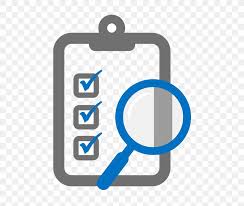Mastering Targeted Programmatic Advertising: A Strategic Framework
Programmatic advertising has revolutionized digital marketing, providing unparalleled precision in audience targeting. This guide presents a strategic framework for maximizing the impact of programmatic campaigns, leveraging established marketing principles and models. We will define key concepts and provide practical applications throughout.
1. Defining Campaign Objectives and Key Performance Indicators (KPIs): Before initiating any campaign, clearly define specific, measurable, achievable, relevant, and time-bound (SMART) objectives. For example, instead of simply aiming for "increased brand awareness," specify a target increase in brand recall by a certain percentage within a defined timeframe. This clarity informs all subsequent strategic decisions and allows for effective KPI tracking and measurement against established benchmarks using frameworks like the Balanced Scorecard.
2. Comprehensive Audience Segmentation and Profiling: Employing robust market research techniques, develop detailed audience personas. This involves identifying key demographic attributes (age, gender, location, income), psychographic characteristics (interests, values, lifestyle), and behavioral patterns (online activities, purchasing history). The application of clustering techniques (e.g., k-means clustering) can help group similar individuals into distinct segments for tailored messaging. This precise segmentation is crucial for effective targeting, ensuring your advertising budget is efficiently allocated. The use of data analytics tools and CRM data allows for a richer understanding of customer journeys and preferences, enhancing the accuracy and effectiveness of your audience targeting.
3. Strategic Selection of Programmatic Advertising Platforms: The choice of programmatic platform significantly impacts campaign effectiveness. Consider factors such as platform capabilities (targeting options, reporting transparency, integration with other marketing tools), pricing models (CPM, CPC, CPA), and the platform’s reputation and adherence to industry best practices. A thorough cost-benefit analysis, considering both short-term and long-term implications, should guide your selection. Evaluate platforms based on their alignment with your campaign objectives and budget constraints. Factors such as user-friendliness and technical support should also be considered.
4. Budget Allocation and Optimization: Develop a comprehensive budget allocation strategy that aligns with your campaign objectives and KPIs. This involves allocating resources across different channels, ad formats, and targeting parameters. Employ a data-driven approach, utilizing techniques such as attribution modeling to understand the contribution of various channels to overall conversions. Continuously monitor and optimize your budget allocation based on real-time performance data to maximize return on investment (ROI). This necessitates the implementation of robust monitoring and reporting mechanisms.
5. Precise Targeting and Optimization: Utilize the advanced targeting capabilities of programmatic platforms. This includes contextual targeting (placing ads on relevant websites), behavioral targeting (targeting users based on their online behavior), and retargeting (re-engaging users who have previously interacted with your brand). A/B testing different targeting parameters (location, demographics, interests) allows for continuous optimization based on real-time performance data. This iterative process leverages the principles of experimental design to improve targeting efficacy over time.
6. Creative Development and A/B Testing: Craft compelling ad creatives tailored to each specific audience segment. These should incorporate high-quality visuals, persuasive copy, and clear calls-to-action, consistently aligning with brand guidelines. The use of A/B testing allows for the systematic comparison of different ad variations to identify the most effective creatives based on key metrics such as click-through rates (CTR) and conversion rates. This data-driven approach ensures continuous improvement in ad performance.
7. Conversion Tracking and Measurement: Implement robust conversion tracking mechanisms to monitor campaign performance accurately. This involves integrating conversion tracking pixels on your website and analyzing data to understand the effectiveness of different ad variations and targeting strategies. Utilize analytics platforms to track key metrics, analyze trends, and identify areas for improvement. The data collected should be used to refine targeting parameters, optimize bidding strategies, and improve ad creatives.
8. Retargeting Strategies for Enhanced Engagement: Retargeting enables re-engagement with users who have previously shown interest in your offerings. Employ different retargeting strategies based on user behavior, such as frequency capping (limiting the number of times a user sees the same ad) to avoid ad fatigue, and dynamic creative optimization (personalizing ads based on user data). This approach enhances user experience and significantly improves conversion rates. Retargeting strategies should be carefully planned to avoid being perceived as intrusive.
9. Mobile-First Approach: Given the dominant role of mobile devices, ensure your ads are optimized for mobile viewing. This requires employing responsive design techniques and utilizing mobile-specific ad formats. Testing across different devices and operating systems ensures a seamless user experience and maximizes reach across mobile platforms. Mobile optimization also increases the effectiveness of engagement strategies.
10. Real-Time Monitoring and Campaign Optimization: Continuously monitor campaign performance in real-time using appropriate dashboarding tools. Adjust targeting parameters, bidding strategies, and ad creatives based on observed performance. This iterative process ensures that campaigns remain aligned with objectives and consistently deliver optimal results. Real-time adjustments allow for immediate responses to changing market conditions and user behavior patterns.
11. Leveraging Artificial Intelligence (AI) and Machine Learning (ML): Explore AI-powered programmatic platforms to leverage the power of machine learning for automated bidding, targeting optimization, and creative personalization. This automated approach improves efficiency, reduces manual effort, and enhances overall campaign performance. AI and ML algorithms can identify patterns and trends in data that might be missed by manual analysis, improving both the precision and scalability of programmatic campaigns.
12. Frequency Capping and Brand Safety: Implement frequency capping strategies to prevent ad fatigue and maintain a positive brand perception. This involves limiting the number of times a user sees the same ad within a specified timeframe. Simultaneously, prioritize brand safety by avoiding placements on inappropriate or low-quality websites. This strategy maintains a positive brand image and improves user engagement.
13. Data Analysis and Reporting: Regularly analyze campaign data to extract actionable insights. This includes identifying trends, patterns, and audience behaviors to inform future campaign strategies. Create comprehensive reports that summarize campaign performance against established KPIs, facilitating data-driven decision making and continuous improvement. Effective reporting ensures accountability and transparency.
14. Continuous Learning and Adaptation: The programmatic advertising landscape is constantly evolving. Stay informed about industry trends, emerging technologies, and best practices. Continuous professional development and participation in relevant industry events are vital to maintaining a competitive edge and ensuring the ongoing effectiveness of your programmatic advertising strategies. Adaptability to change is crucial for long-term success.
15. Compliance and Ethical Considerations: Adhere strictly to all relevant advertising regulations and best practices, ensuring data privacy and user consent. Transparency and ethical conduct are paramount for maintaining credibility and building trust with your audience. Compliance with regulations avoids potential legal issues and damage to brand reputation.
Conclusions and Recommendations
Successful programmatic advertising requires a strategic, data-driven approach. By meticulously planning, consistently optimizing, and deeply understanding the target audience, businesses can create highly effective campaigns. This necessitates a holistic framework incorporating elements of market research, data analytics, and a strong understanding of advertising principles and techniques. The use of AI and machine learning offers significant potential for enhancing campaign efficiency and performance. Ongoing monitoring, reporting and continuous adaptation are crucial for maintaining competitiveness and achieving long-term success. Further research into advanced targeting techniques, such as predictive modeling and contextual analysis, offers the potential to further refine the precision and effectiveness of programmatic campaigns.
Reader Pool: What are your thoughts on the importance of ethical considerations in the context of leveraging AI and machine learning for programmatic advertising, and how can these be effectively balanced against the pursuit of maximizing campaign ROI?






